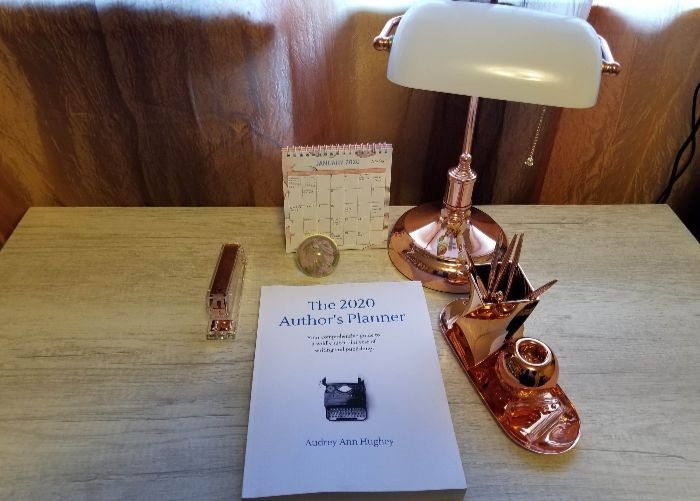I’ve written five full length books and have edited three books and two anthologies. As an editor it surprises me how many people think that a book is done when they’ve finished the first draft! Of course it’s an important step, many people never make it that far. However there’s a lot of work between the moment you save your first completed file and getting the book into the hands of the people who need it. Getting to that point requires three major steps: writing the book, publishing the book, and connecting with readers.
Writing the book
Writing means more than just putting words on a page. It’s actually a process. It has distinct stages: shaping the idea, drafting, and editing.
Shaping the idea
What do you want to write about? The concept comes first. If you’re already doing lectures or workshops on a given topic that’s your book! You can write about your experience, or you can research a topic and write about that.
To start the book you can create an outline of the topics you want to cover. As an editor I’m sometimes approached by writers to do a conceptual edit and review the outline. It’s never too soon to get feedback! Another pair of eyes on the topic can help you catch a hole you’ve missed. You might realize that the topic is larger than one book. If it’s too specific it might need to be put together with other ideas to form a book-length work.
Drafting the book
There’s a romantic image of the inspired writer scribbling on a pad or banging on a keyboard for days on end in a white heat of creation. It turns out that writing is a discipline. It means sitting down at your desk (office, kitchen table, coffee shop) day in and day out until the whole manuscript takes shape.
A book length project takes a lot of time to draft. Books in my field generally run in the 50,000 to 60,000 word length. When I’m drafting a book I’ve had to turn down invitations to have fun with my friends and alert my family that the housework isn’t getting done for a while. Sometimes I go on retreats to get away from interruptions (two partners, one dog and three overly affectionate cats) to get the work done.
Some people draft easily, others labor to get the work on the page. This is the part most people think of as “writing”. Drafting is the most important step. Once a draft exists an editor can help to shape the book, but you can’t edit what doesn’t exist. I regularly encourage my friends who are writers in this stage of the process. Write write write!
Editing the book
One of the most helpful pieces of advice about the writing process is to separate drafting from editing. Editing a work while you’re drafting can stop the flow of creativity. Let yourself make mistakes! You can catch spelling and grammar errors in the editing process. The most important thing is to make a draft.
Once you’ve written the first draft, congratulations! Many people never make it this far. It’s a good idea at this point to walk away from the project for at least a week or two before starting on the edit. This allows you to get some perspective on the work and approach it with fresh eyes. I know writers who fall into the trap of rewriting the same material endlessly so the work is never done. Put it down and walk away!
Now it’s time to do a developmental edit. This is different than proofreading or copy editing which comes later in the project. Proofreading will correct spelling, grammar and punctuation. A developmental edit walks through the work to make sure the ideas flow logically and cover the material that was promised. Look for holes and inconsistencies. Does the book have a consistent voice?
There’s a lot of advice to writers out there which tries to shortcut this process with rules like “cut ten percent of your book”. A non-fiction work will be 50,000 to 100,000 words. If your manuscript runs short, say 20k, or runs long at 200k or up, cutting ten percent is not going to fix the issue. You’ll need to learn how to look at your book at a deeper and more structural level.
The best description of this process I’ve found is a Udemy course Editing Mastery: How to Edit a Book to Perfection. Shani Raja breaks the process into successive sweeps: Content Edit, Structure Edit, Style Edit, and Presentation Edit. It’s only in the final step that you do the spelling and grammar proofreading. If you’d like to get better at editing your own work or you find yourself editing other writers as I have, this is a good course to check out.
Finally, if you have trouble editing yourself you can hire a developmental editor. Jane Friedman offers a Comprehensive Guide to Finding and Working with Editors. Actually her web site is one of the best resources for writers at all stages of the process.
When the edit is complete, congratulations! The book is on its way to existing. Now it’s time for the next step, publication.
Publishing the book
First, are you going to publish the book yourself or place it with a publishing house? Publishing it yourself gets it into print right away. One way to bring out the book is to save it as a .pdf and make it available to people through your web site, mailing list, or social media files. If you take this route you might consider using a Creative Commons copyright. This is a good choice for topics that have a very limited audience and a good choice for shorter works. I have eight ebooks so far.
There are many articles and books detailing how to sell your work to a publisher. I work in the metaphysical – esoteric – occult field. Major publishers may bring out a book in the field like Wicca and Witchcraft for Dummies. Placing a book with a house of that size usually means working through an agent.
There are a few publishers which specialize in the metaphysical market. Each of them offers a way to submit to the house directly. Find their submission guides and read them! You and only you are responsible to know the length your manuscript should be. Reread these again before you submit.
Here are five well known established publishing houses. I have books with Llewellyn and Immanion-Megalithica and I know writers who work with all five of these publishers. Each has a distinctive house style.
There are other small press publishers targeting specific readerships in the field. Don’t be afraid to work your contacts! The people in your community know other writers and publishers. If you haven’t found your community yet this is a good time to connect with one. You will also build your own community with your readers.
Once you’ve placed the book you will have another set of editing passes. With Llewellyn I get structural notes, then copy editing notes, and finally a galley proof to go over myself to catch any last-minute errors. Then it’s off to the printer!
Connecting with Readers
As a writer there’s nothing more exciting than getting a box stuffed with copies my brand new book. I made an unboxing video for Cord Magic to share my excitement. Once the freshly minted copies are in my hands, how am I going to get them into the hands of my readers?
When your book is in print, physically or in ebook form, the next step is to make sure that people who would like to read it know that it exists. The days when writers could say “the publisher will take care of marketing” are over. Many books compete for attention and readership in general is declining. Publishers expect writers to promote the book. More than that, your readers will expect to be able to connect with you.
If you’re good at marketing, use that! I’m not that great at it, I freeze up if I think I’m trying to sell something. What helps me is to remember why I’m doing the work in the first place. Metaphysical writing is not a get rich quick scheme. There are many more effective ways to make money. Writers in my field are motivated by having something to share. Marketing and promoting the book are ways to reach the people who are eager to find what we have to share. These days that means having an online presence.
Jane Friedman calls your online presence your author platform. This means having a web site, sure, but it’s more than that, it’s the collection of ways that you connect with your readers. Here are some of the ways that writers connect with readers.
- Amazon author page
- Goodreads author page
- Facebook account, Facebook page
- Instagram account
- Mailing list
- Videos (like YouTube)
I have discovered that it does not go without saying that you will want to standardize the name you use on all your accounts. Use one name! If you write and post under different names people will have a harder time connecting with your work. My writer handle is “Brandy Williams Author” (there are a lot of Brandy Williamses out there!) You can find me on all the media I use under that name.
The exception to this is if you want to steer your readers into different tracks. You might write under one name for non-fiction and another name for fiction. I have read fiction authors who write under different names in different genres. In that case you’ll be building an author platform for each profile, but you will still need to standardize your name within that platform.
You may also promote your work through personal appearances, in person or online: book signings, Pagan and magical festivals, Facebook or YouTube live sessions. Your author platform can advertise and document these appearances.
The Life Cycle of a Book
For me it takes about two years to complete the three steps of writing, publishing and connecting. Once I’ve settled on a concept it takes me a month to six weeks to draft and another two to three months to edit. I budget four months for the writing process. Once the book is with the publisher it takes up to a year for the editing and printing process.
When the book is released it is front list, which means the publisher is promoting the book through its current catalog and sales conferences. That’s the time I do the first push to connect with my audience. During the time a book is front list I focus all my efforts on connecting with the audience for that book.
The front list period lasts until the next catalog comes out. This time varies depending on the publishing house. For example, if the house issues four catalogs a year the front list period is three monts. After that the book is back list, still available but has moved to the back pages of the catalog. The book will stay on the back list so long as it sells enough copies. If sales trail off it might go out of print. With print-on-demand publishers the book may stay in print for much longer and may never go out of print no matter how few or many copies sell.
I continue to connect through my author platform for all the books I’ve written. I have one book at a print-on-demand house, one book which has been backlist for fifteen years, two books which have gone out of print, and one book on front list. Currently promoting my front list book, Cord Magic. Once the book moves to back list I have a stack of projects: bringing out my out-of-print books with my own press, completing the next ebooks, and starting work on my next book-length project.
If you’ve made it through the life cycle with one book you have accomplished something very few people pull off. Congratulations! I’d love to connect with you. I wish all writers luck and fulfilment on the journey.




